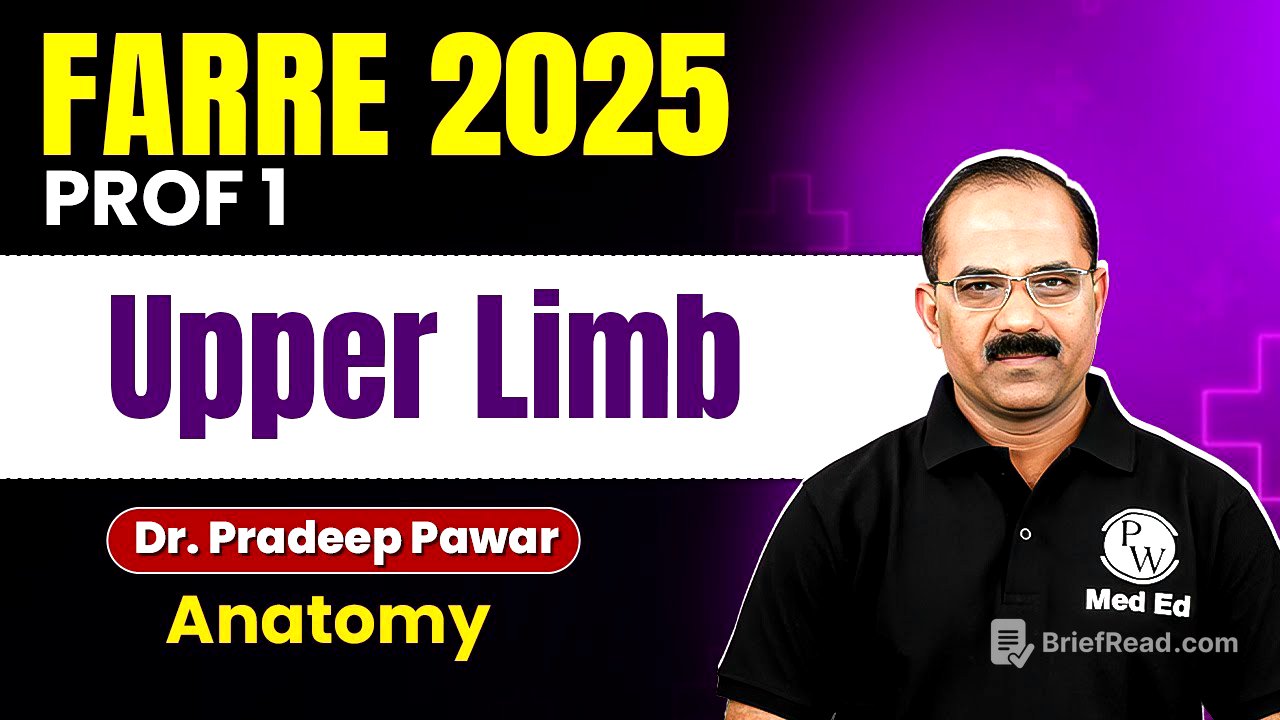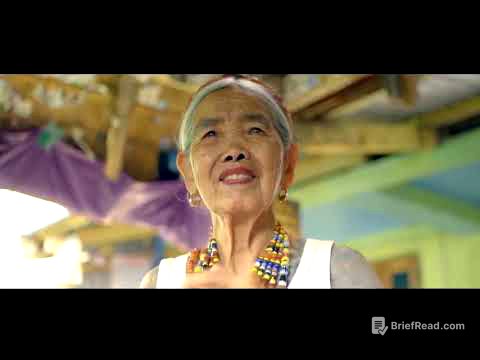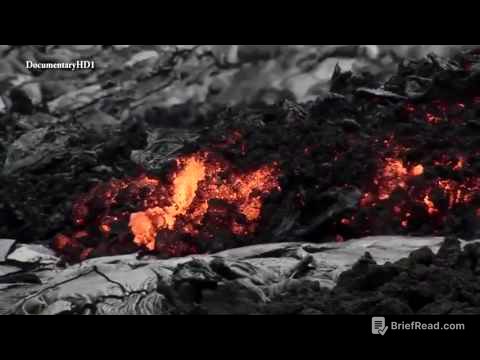TLDR;
This video provides a comprehensive review of upper limb anatomy, focusing on key muscles, nerves, and clinical correlations. It emphasizes practical application and MCQ preparation, covering topics from the pectoralis major to hand musculature and common nerve injuries.
- Pectoralis Major and Clavipectoral Fascia
- Deltoid and Scapular Muscles
- Brachial Plexus and Axillary Artery
- Arm and Forearm Musculature
- Hand Anatomy and Nerve Injuries
Introduction [0:30]
The session starts with a welcome and an overview of the Fare series, designed to quickly revise anatomy, focusing on important theory and practical aspects, and clarifying MCQs. The approach is to recollect existing knowledge rather than rote memorization.
Pectoralis Major and Clavipectoral Fascia [2:12]
The lecture begins with the pectoralis major, detailing its origin (medial two-thirds of the clavicle, sternum, 2nd-6th costal cartilages, and external oblique aponeurosis), insertion (lateral lip of the bicipital groove), action (adduction, flexion, and medial rotation at the shoulder joint), and nerve supply (medial and lateral pectoral nerves), composite muscle. The clavipectoral fascia, lying deep to the pectoralis major, originates from the clavicle, encloses the subclavius and pectoralis minor, and inserts into the axilla. Structures piercing this fascia include the cephalic vein, thoracoacromial artery, lateral pectoral nerve, and lymphatics from the breast. The suspensory ligament of the axilla pulls the axilla up, contributing to its dome shape.
Serratus Anterior and Intercostobrachial Nerve [6:22]
The lateral cutaneous branch of the intercostal nerve, which pierces the serratus anterior and divides to supply the skin on the ventral and dorsal aspects of the chest wall, is discussed. The lateral cutaneous branch of the second intercostal nerve joins with the medial cutaneous nerve of the arm, forming the intercostobrachial nerve. The rectus abdominus muscle is highlighted, noting the tendinous intersections that indicate its segmented formation. The anterior cutaneous branch of the intercostal nerve pierces the pectoralis major to supply the skin on the anterior chest wall.
Deltoid and Scapular Muscles [10:31]
The deltoid muscle, with its clavicular, acromial, and spinal origins, inserts on the deltoid tuberosity of the humerus. The anterior fibers cause flexion and medial rotation, posterior fibers cause extension and lateral rotation, and acromial fibers cause abduction from 15 to 90 degrees. The axillary nerve supplies the deltoid and teres minor, with its cutaneous branch known as the upper lateral cutaneous nerve of the arm. Injury to this nerve leads to the regimental badge sign. The trapezius muscle is innervated by the spinal accessory nerve, which also supplies the sternocleidomastoid. A diagram of the scapula is presented to identify muscles arising from its borders, including the teres minor, teres major, levator scapulae, rhomboid minor, rhomboid major, latissimus dorsi, infraspinatus, supraspinatus, long head of biceps, and long head of triceps.
Serratus Anterior and Scapular Movements [15:41]
The serratus anterior originates from the lateral aspect of the upper eight ribs and inserts on the costal surface of the medial border of the scapula. Innervated by the long thoracic nerve (C5, C6, C7), it protracts the scapula, pulling it forward along the chest wall. Damage to the serratus anterior results in winging of the scapula. Abduction at the shoulder joint is divided into phases: 0-15 degrees by the supraspinatus, 15-90 degrees by the deltoid, and 90 degrees and above by the serratus anterior and trapezius with lateral rotation of the scapula.
Axilla Boundaries and Axillary Artery [19:00]
The anterior wall of the axilla is formed by the pectoralis major, pectoralis minor, and subclavius. The posterior wall is formed by the subscapularis, teres major, and latissimus dorsi, with the axillary artery and brachial plexus lying on it. The medial wall consists of the ribs and serratus anterior, while the lateral wall is formed by the humerus. The pectoralis minor divides the axillary artery into three parts. The branches of the axillary artery include the superior thoracic (first part), thoracoacromial and lateral thoracic (second part), and subscapular, anterior circumflex humeral, and posterior circumflex humeral (third part).
Brachial Plexus [24:30]
The brachial plexus is formed by the ventral rami of C5, C6, C7, C8, and T1. C5 and C6 join to form the upper trunk, C7 forms the middle trunk, and C8 and T1 form the lower trunk. Each trunk divides into anterior and posterior divisions. The anterior divisions of the upper and middle trunks form the lateral cord, the anterior division of the lower trunk forms the medial cord, and the posterior divisions of all three trunks form the posterior cord. Branches of the lateral cord include the lateral pectoral nerve, lateral root of the median nerve, and musculocutaneous nerve. Branches of the medial cord include the medial pectoral nerve, medial root of the median nerve, medial cutaneous nerve of the arm, medial cutaneous nerve of the forearm, and ulnar nerve. Branches of the posterior cord include the upper subscapular, lower subscapular, axillary, nerve to latissimus dorsi, and radial nerves. Branches from the roots include the dorsal scapular nerve (C5) and the long thoracic nerve (C5, C6, C7). The accessory phrenic nerve may arise from C5 and join the main phrenic nerve (C3, C4, C5), which lies on the scalenus anterior muscle. Branches from the upper trunk include the suprascapular nerve and the nerve to subclavius. Roots and trunks are found in the posterior triangle of the neck, divisions are retroclavicular, and cords and nerves are in the axilla.
Arm Musculature and Nerve Injuries [31:37]
The arm contains the biceps brachii, coracobrachialis, and brachialis muscles. The long head of the biceps arises from the supraglenoid tubercle, while the short head arises from the coracoid process. The biceps inserts on the posterior rough part of the radial tuberosity and acts as a powerful supinator in a mid-flexed forearm. The coracobrachialis originates from the coracoid process and inserts on the middle half of the medial aspect of the shaft of the humerus, acting as a flexor of the shoulder joint. The brachialis originates from the anteromedial and anterolateral surfaces of the lower half of the shaft of the humerus and inserts on the ulnar tuberosity, primarily flexing the elbow joint. The musculocutaneous nerve, a branch of the lateral cord, pierces the coracobrachialis, lies between the biceps and brachialis, and continues as the lateral cutaneous nerve of the forearm. A dual nerve supply of brachialis: medial half is muscular nerve, lateral half is radial nerve. Erb's paralysis involves injury to the upper trunk of the brachial plexus (C5, C6), affecting the musculocutaneous and axillary nerves. Axillary nerve damage results in deltoid and teres minor paralysis, leading to adduction and medial rotation of the arm, plus regimental badge sign. Musculocutaneous nerve injury results in loss of flexion and supination, leading to an extended and pronated forearm, plus loss of sensation on the lateral aspect of the forearm and policeman's tip hand.
Forearm Musculature and Nerve Supply [40:15]
The front of the forearm includes superficial (pronator teres, flexor carpi radialis, palmaris longus, flexor carpi ulnaris), intermediate (flexor digitorum superficialis), and deep muscles (flexor pollicis longus, flexor digitorum profundus, pronator quadratus). The flexor digitorum superficialis splits into two slips and inserts on the base of the middle phalanx, while the flexor digitorum profundus inserts on the base of the distal phalanx. Nerves in the front of the forearm include the ulnar nerve, median nerve, and anterior interosseous nerve (a deep branch of the median nerve). The median nerve supplies the pronator teres, flexor carpi radialis, palmaris longus, and flexor digitorum superficialis. The anterior interosseous nerve supplies the flexor pollicis longus, pronator quadratus, and the lateral half of the flexor digitorum profundus. The ulnar nerve supplies the flexor carpi ulnaris and the medial half of the flexor digitorum profundus. The forearm space of Parona is located between the flexor pollicis longus, flexor digitorum profundus, and pronator quadratus.
Carpal Tunnel and Flexor Retinaculum [45:52]
Carpal tunnel syndrome involves compression of the median nerve in the carpal tunnel, often due to ulnar bursitis. The flexor retinaculum splits on the lateral side, allowing the flexor carpi radialis tendon to pass through. The carpal tunnel contains the tendons of the flexor digitorum superficialis, flexor digitorum profundus, flexor pollicis longus, and the median nerve. The ulnar bursa and radial bursa are also present. The volar carpal ligament is an extension of the flexor retinaculum, with the ulnar artery and ulnar nerve passing through the tunnel of Guyon. The tendon of the palmaris longus forms the palmar aponeurosis. The palmar cutaneous branch of the ulnar nerve supplies the skin over the hypothenar eminence, while the palmar cutaneous branch of the median nerve supplies the skin over the thenar eminence.
Hand Anatomy and Arches [57:37]
The superficial palmar arch is formed by the superficial branch of the ulnar artery and completed by the superficial palmar branch of the radial artery, lying at the level of the distal palmar crease. It gives off three common digital branches and one proper digital branch. The deep palmar arch is formed by the radial artery and completed by the deep branch of the ulnar artery. It gives off the arteria princeps pollicis, arteria radialis indicis, and three metacarpal arteries, which anastomose with the common digital branches of the superficial palmar arch.
Lumbricals and Interossei [1:03:38]
The lumbricals arise from the tendons of the flexor digitorum profundus. The first and second lumbricals arise from the lateral aspect of the first and second tendons, respectively, while the third and fourth arise from the medial aspect of the third and lateral aspect of the fourth tendons. They insert on the lateral aspect of the base of the proximal phalanges and the dorsal aspect of the base of the distal phalanges, causing flexion at the metacarpophalangeal joints and extension at the interphalangeal joints. The first two lumbricals are supplied by the median nerve, while the third and fourth are supplied by the ulnar nerve. Palmar interossei arise from the metacarpal bones and cause adduction of the fingers. Dorsal interossei are bipinnate and cause abduction of the fingers.
Nerve Supply to the Hand and Composite Muscles [1:14:16]
The median nerve supplies five muscles in the hand: abductor pollicis brevis, flexor pollicis brevis (superficial head), opponens pollicis, and the first and second lumbricals. The ulnar nerve supplies 15 muscles in the hand, including the abductor digiti minimi brevis, flexor digiti minimi brevis, opponens digiti minimi, third and fourth lumbricals, all palmar and dorsal interossei, adductor pollicis, and the deep head of the flexor pollicis brevis. Composite muscles of the upper limb include the pectoralis major, pectoralis minor, brachialis, flexor digitorum profundus, and flexor pollicis brevis.
Course of Median and Ulnar Nerves [1:18:23]
The median nerve originates from the lateral and medial cords of the brachial plexus (C5-T1). It crosses the brachial artery from the lateral to medial side and passes between the two heads of the pronator teres in the cubital fossa. In the forearm, it lies between the flexor digitorum superficialis and flexor digitorum profundus. It enters the hand through the carpal tunnel. The ulnar nerve is a branch of the medial cord. It pierces the medial intermuscular septum with the superior ulnar collateral artery and passes behind the medial epicondyle. It enters the forearm between the two heads of the flexor carpi ulnaris. In the forearm, it lies on the flexor digitorum profundus and below the flexor carpi ulnaris. It enters the hand through the tunnel of Guyon.
Radial Nerve and Arm Spaces [1:36:21]
The triceps brachii has three heads: long, lateral, and medial, all inserting on the olecranon process of the ulna. The radial nerve in the axilla gives muscular branches to the long and medial heads of the triceps and the posterior cutaneous nerve of the arm. In the spiral groove, it gives muscular branches to the lateral and medial heads of the triceps and anconeus, as well as the posterior cutaneous nerve of the forearm and the lower lateral cutaneous nerve of the arm. On the lateral aspect of the arm, the radial nerve supplies the brachioradialis, brachialis, and extensor carpi radialis longus. In the cubital fossa, the radial nerve divides into a superficial branch and a deep branch (posterior interosseous nerve). Spaces around the arm include the upper triangular space (teres minor, long head of triceps, circumflex scapular artery), lower triangular space (teres major, long head of triceps, radial nerve, profunda brachii artery), and quadrangular space (long head of triceps, neck of humerus, teres minor, teres major, axillary nerve, posterior circumflex humeral artery).
Anatomical Snuff Box and Dermatomes [1:46:23]
The anatomical snuff box is bounded by the abductor pollicis longus and extensor pollicis brevis (anteriorly) and the extensor pollicis longus (posteriorly). The floor is formed by the styloid process, scaphoid, and trapezium. The contents include the radial artery and the superficial branch of the radial nerve. Dermatomes of the upper limb include C6 (thumb), C7 (three fingers), C8 (little finger), and T1 and T2.
Palmar Spaces and Shoulder Joint [1:51:02]
A septum from the palmar aponeurosis to the third metacarpal bone divides the palm into the thenar space and the midpalmar space. The flexor pollicis longus enters the thenar space, while the other tendons enter the midpalmar space. The shoulder joint is a ball-and-socket synovial joint formed by the glenoid cavity and the head of the humerus. Ligaments include the capsular ligament, glenoid labrum, coracohumeral ligament, and coracoacromial ligament. Relations of the joint include the pectoralis major and subscapularis (anteriorly), teres minor and latissimus dorsi (posteriorly), supraspinatus and deltoid (superiorly), and triceps (inferiorly). Movements include flexion, extension, abduction, adduction, medial and lateral rotation. The rotator cuff (supraspinatus, infraspinatus, teres minor) prevents anterior, posterior, and superior displacement.
Clinical MCQs and Review [1:56:54]
Clinical MCQs are presented, including carpal tunnel syndrome and Saturday night palsy. Key topics for review include relations of the axillary artery, brachial plexus, deltoid, cubital fossa, three nerves (median, ulnar, radial), shoulder joint, elbow joint, paralysis (Erb's, Klumpke's), muscles, lumbricals, interossei, carrying angle, and rotator cuff.









